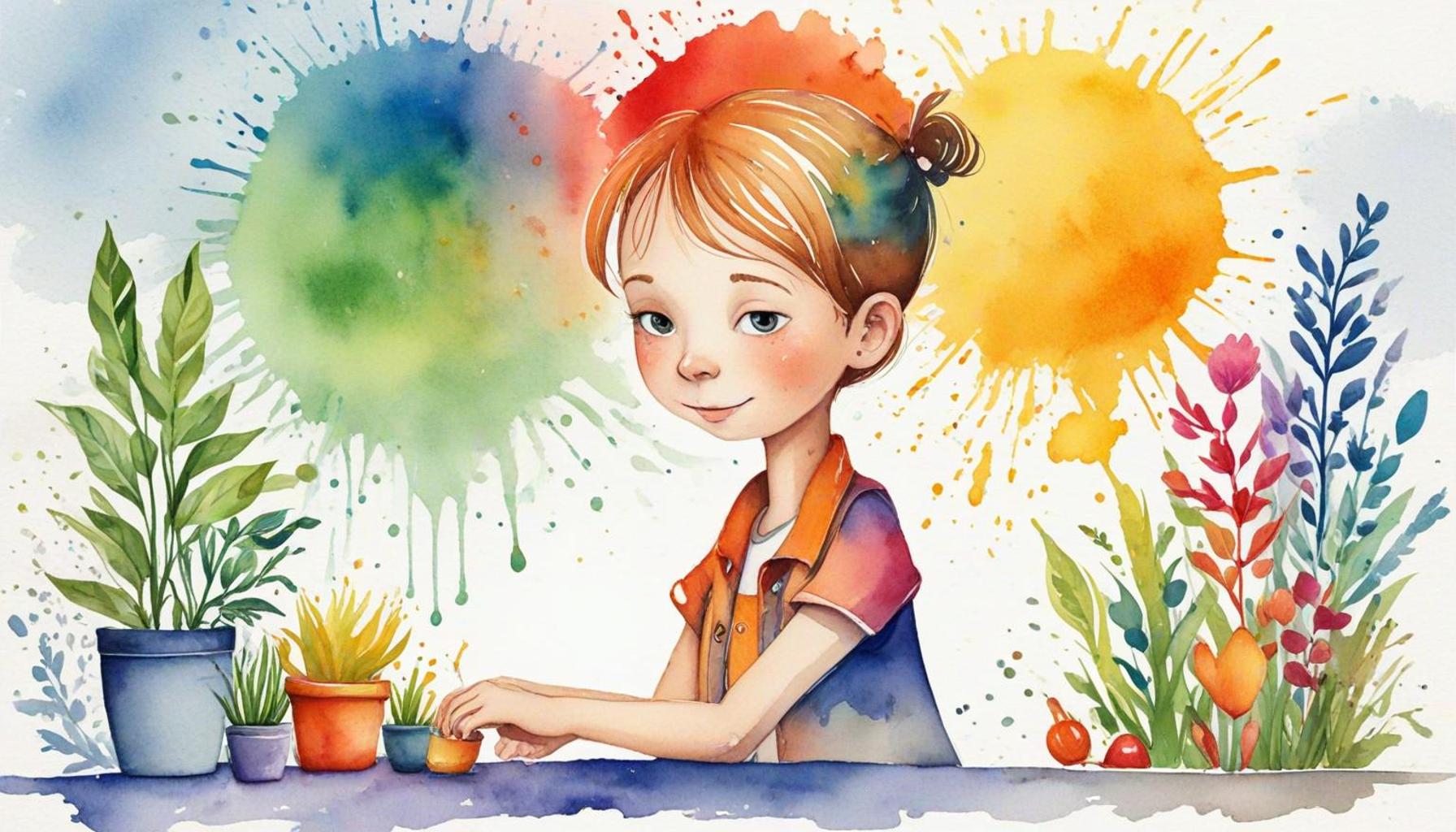Growth Mindset Strategies for Cultivating Kids Potential

Introduction
In a world that continually emphasizes achievement and success, the concept of a growth mindset has emerged as a crucial element in child development. Understanding and nurturing this approach can significantly impact children’s ability to face challenges and embrace learning. By cultivating a growth mindset, parents can equip their children with the resilience needed to navigate life’s ups and downs.
Integrating practices like Shower Meditation can serve as an innovative method to foster this mindset. It encourages children to reflect, center their thoughts, and develop positive self-talk while embracing their emotions. This article will explore strategies to cultivate a growth mindset and prepare you for a ranking of the Top 5 effective techniques.
- Gain insights into the benefits of a growth mindset.
- Discover practical tips for everyday application.
- Learn how mindfulness practices enhance resilience.
Join us as we delve into these strategies and unlock the potential in every child.
SEE ALSO: Click here to read another article
Top 5 Strategies to Cultivate a Growth Mindset in Children
In today’s fast-paced world, fostering a growth mindset in children is more important than ever. This mindset is not just a passing educational trend; it is a profound approach that empowers children to embrace challenges, persevere in the face of difficulties, and view failures as opportunities for learning and growth. As society evolves, equipping the younger generation with such an outlook is crucial to their lifelong success and resilience. Through the implementation of the following strategies, you can encourage children to develop a growth mindset that will be an invaluable asset throughout their lives. Let’s delve into the top five strategies, starting from the least effective yet meaningful, and culminating in the most impactful approach.

5. Celebrate Effort, Not Just Success
An effective strategy for cultivating a growth mindset in children is to celebrate their efforts rather than merely their successes. This approach shifts the focus from the outcome to the process, highlighting the significance of hard work and perseverance. When children consistently receive praise for achievements alone, they might develop an aversion to failure, fearing the loss of approval. On the contrary, when effort is celebrated, it fosters a culture of persistence. For example, instead of simply complimenting a child with “Good job on getting an A!”, try saying, “I am proud of how much effort you put into that project!” This acknowledgment emphasizes that improvement is attainable through diligence and practice.
- Focus on specific aspects of the effort made: Highlight specific elements of their hard work, such as their dedication to detail or creative problem-solving.
- Encourage them to discuss what they learned during the process: By doing so, children can reflect on their experiences and develop a deeper understanding of the tasks at hand.
- Share stories of famous personalities who faced failures before achieving success: Icons like Thomas Edison, who famously said, “I have not failed. I’ve just found 10,000 ways that won’t work,” serve as powerful examples of persistence.
4. Use Challenges as Learning Opportunities
It is crucial to teach children to view challenges as valuable learning experiences rather than hurdles to avoid. This perspective encourages a positive approach to problem-solving. When children encounter difficulties, it is essential to convey that these moments are opportunities for growth and self-discovery. You might explain, “This problem is tough, but think about what we can learn by tackling it together!” Such statements encourage a proactive attitude towards challenges.
- Encourage critical thinking by asking questions about obstacles faced: Discussing what makes a task difficult helps children break down problems into manageable parts.
- Facilitate problem-solving discussions: Guide children through brainstorming sessions to tackle challenges creatively.
- Celebrate the lessons learned, regardless of the outcome: Highlight the understanding gained and skills developed during challenging activities.
3. Foster a Safe Space for Mistakes
Creating an environment where mistakes are acceptable and encouraged can significantly enhance a child’s confidence and willingness to explore new possibilities. When children feel secure in making mistakes, they are more inclined to take risks and try novel ideas without the fear of judgment. Make it clear that making mistakes is natural and each misstep is an opportunity for learning.
- Share personal anecdotes where mistakes led to learning: Personal stories create relatability and demonstrate that making mistakes is a natural part of growth.
- Encourage group activities where mistakes can be openly discussed: Such activities can foster a community of learners who support one another.
- Maintain a positive tone when addressing errors: Use language that is constructive and supportive rather than critical.
2. Encourage Curiosity and Questioning
Curiosity and questioning are essential components of a growth mindset. When children are encouraged to ask questions and explore the world around them, they engage in deeper thinking and understanding. This curiosity leads to a natural pursuit of knowledge, moving beyond rote memorization to a more comprehensive grasp of concepts. Cultivate an atmosphere where inquiry is encouraged, and pose prompts like “What do you think will happen if…?” to spark their curiosity.
- Support their explorative behavior by providing resources for further learning: Introduce books, videos, and activities that nurture their curiosity.
- Celebrate when children come up with intriguing questions: Praise innovative thinking and imaginative inquiries, fostering a sense of accomplishment.
- Engage in discussions that foster open-ended questioning: Encourage conversations that allow for multiple viewpoints and solutions.
1. Model a Growth Mindset Yourself
The most impactful strategy for instilling a growth mindset in children is to model the behavior yourself. Children are observant and often learn more from what they see than what they hear. Exhibit a growth mindset in your own daily life, as this provides a powerful example for young minds. Share your experiences with challenges and how you navigated them, emphasizing the learning journey over the final outcome. Use language that reflects a growth mindset, such as, “I can improve if I keep trying!” This demonstrates resilience and continuous learning.
- Discuss your own challenges candidly: Openly share how you have faced setbacks and the lessons you drew from them.
- Demonstrate resilience in the face of setbacks: Show persistence in your endeavors, which can motivate children to persevere in theirs.
- Encourage reflective practices within your family: Create family traditions where everyone reflects on their day, noting successes, challenges, and what was learned.
By integrating these strategies into everyday interactions, you can effectively cultivate a growth mindset in children, leading them to welcome challenges and pursue continuous learning. This mindset not only enhances their academic performance but also equips them with the resilience needed to navigate life’s uncertainties. Start implementing these ideas today, and watch their confidence and capability bloom!
| Category | Description |
|---|---|
| Encouraging Perseverance | Teaching children that challenges are opportunities for growth instills a strong sense of perseverance. |
| Fostering Curiosity | Creating an environment where questions are encouraged nurtures a child’s innate curiosity and desire to learn. |
| Value of Feedback | Instilling the understanding that feedback is a tool for improvement empowers children to embrace constructive criticism. |
| Setting Realistic Goals | By guiding children to set achievable goals, they can experience a sense of accomplishment, reinforcing their motivation to conquer new challenges. |
Exploring ways to cultivate a growth mindset in children is critical in today’s world. One effective approach is encouraging perseverance. When children face obstacles, it is essential to affirm that these are valuable learning moments. By emphasizing that struggle is a part of learning, children learn to see challenges not as failures but as stepping stones toward success. Research indicates that bolstering a child’s ability to persevere can significantly affect their long-term success in academics and beyond.Moreover, fostering curiosity plays a pivotal role in developing a growth mindset. When parents and educators create an atmosphere where questioning is welcomed, children begin to explore new ideas and learn independently. This open-ended inquiry not only enhances their learning experience but also cultivates critical thinking skills that are crucial in the modern world. Reports show that children who are encouraged to be inquisitive tend to achieve greater academic success.Another key aspect is instilling the value of feedback. Teaching children to view feedback as a constructive tool encourages them to engage actively in their learning process. This approach provides them with an opportunity to reflect on their strengths and pinpoint areas for improvement. When children understand that feedback is a pathway to enhance their skills, they are more likely to seek it out and apply it positively.Lastly, guiding children toward setting realistic goals serves as a powerful way to reinforce their growth mindset. Achievement of small, manageable goals allows them to recognize their progress and capabilities. As research supports, when children experience success through achievable steps, their confidence grows, and they become more resilient in facing larger challenges. Therefore, engaging children in goal-setting not only serves immediate benefits but instills a long-lasting desire to learn and evolve.
RECOMMENDED: Check out this similar article
Frequently Asked Questions on Cultivating a Growth Mindset in Children
What is a growth mindset and why is it important for children?
A growth mindset, a term popularized by psychologist Carol Dweck, refers to the belief that abilities and intelligence can be developed through dedication and hard work. This mindset is crucial for children as it enables them to embrace challenges, learn from criticism, and persist despite setbacks. Studies suggest that children with a growth mindset are more likely to achieve higher levels of success and satisfaction. This belief in personal development fosters resilience and fosters a lifelong love of learning.
How can parents encourage a growth mindset in their children?
Parents can play a pivotal role in nurturing a growth mindset in their children by creating an environment that values effort over innate talent. It’s essential for parents to praise the process of learning rather than the end result. Encourage children to set their own goals, reflect on their progress, and view challenges as opportunities for growth. Modeling a growth mindset themselves, parents can share their experiences of overcoming obstacles, reinforcing that failure is simply a stepping stone to success.
What role does language play in developing a growth mindset?
Language is a powerful tool in shaping a child’s mindset. The words adults use can either motivate or hinder a child’s belief in their capacity to learn. It’s important to use language that recognizes effort, strategy, and progress, rather than labeling a child as naturally smart or talented. For example, saying “You worked really hard on this” instead of “You’re so smart” emphasizes the importance of effort and improvement. Encouraging children to say “not yet” instead of “I can’t” reframes challenges as opportunities for growth.
Are there specific activities that promote a growth mindset in kids?
Yes, there are activities specifically designed to promote a growth mindset. Activities that involve problem-solving, creativity, and persistence can be particularly effective. Encourage children to engage in puzzles, team sports, or music, where practice and perseverance lead to improvement. Journaling about personal challenges and achievements can also encourage reflection and growth. These activities not only enhance skillsets but also teach children the importance of dedication and resilience in achieving their goals.
Can schools integrate growth mindset principles into their curriculum?
Schools have a significant opportunity to integrate growth mindset principles into their curriculum by creating a culture that celebrates learning and perseverance. Educators can design lessons that focus on the process of discovery and emphasize the value of making mistakes as part of the learning journey. Incorporating peer feedback, collaborative projects, and setting personalized learning goals can support the development of a growth-oriented learning environment. By embedding these principles into the curriculum, schools can empower students to become lifelong learners.
RECOMMENDED: Check out this similar article
Conclusion: Nurturing a Growth Mindset in Children
As we wrap up our exploration on strategies for cultivating a growth mindset in children, it is crucial to underscore the profound impact this approach can have on their development and resilience. Encouraging a growth mindset involves more than just praising effort; it encompasses fostering a belief in the power of perseverance and the ability to learn from every experience.
To summarize, some of the key strategies include providing constructive feedback, setting achievable goals, and modeling a growth-oriented attitude. Using praise that emphasizes effort rather than innate ability is another pivotal tactic. Additionally, promoting a love of learning and a willingness to embrace challenges are cornerstones of this transformative process. These strategies collectively encourage children to become more self-reliant and positive thinkers.
The relevance of this topic extends beyond parenting into educational settings, where cultivating a growth mindset can be a game-changer in unlocking a child’s potential. It’s essential to highlight that nurturing this mindset is not solely about achieving academic success; it’s about helping children realize their capabilities and develop a comprehensive approach to tackling life’s challenges.
Shower meditation also plays a valuable role here, guiding children in mindful practices that reinforce self-awareness and emotional intelligence. As mindfulness becomes more integrated into routines, children can better process and apply growth-oriented thinking to their daily lives. This combination of mental strategies and mindfulness techniques sets the stage for a more adaptable and resilient generation.
In conclusion, embedding a growth mindset in children from a young age is a powerful tool in preparing them for the complexities of life. By continuously exploring and implementing innovative strategies, parents and educators alike can contribute to the development of well-rounded, tenacious individuals prepared to navigate their futures with confidence.


